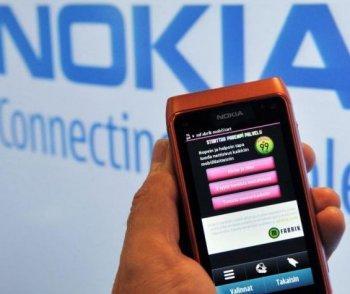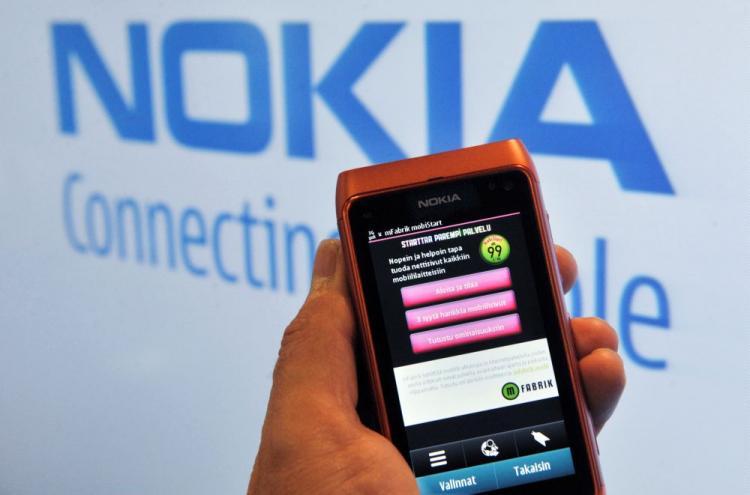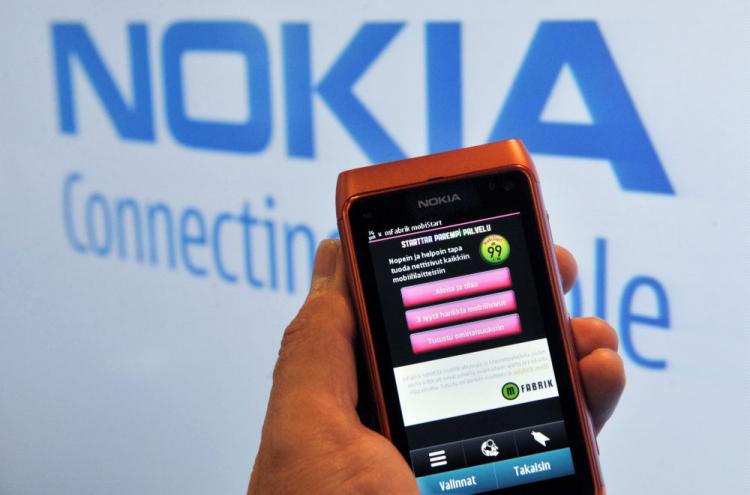Nokia Corp., the world’s largest mobile phone maker, announced in its most recent earnings release that it held around 30 percent of the global converged mobile phone market during the third quarter.
That figure seems impressive—but the company remains only a small player in some of the world’s biggest cell phone markets.
Europe, with almost one-third of Nokia’s sales, followed by the Asia-Pacific market with close to 28 percent of sales, are the most profitable markets for Nokia, having gained a foothold early on by concentrating its smartphone sales in those areas.
But Nokia’s presence in the Americas leaves a lot to be desired. Latin America accounts for about 10 percent of its sales. But North America is lacking far behind—Nokia sells only 3.2 percent of its total volume in North America.
“Stephen Elop, Nokia’s new CEO, has one tricky to-do list and not much time,” according to a recent Knowledge@Wharton (KW) report. “To revitalize its brand, Nokia must in short order develop smartphones that effectively compete with Apple’s iPhone and Google’s Android devices, make key decisions on the future of the company’s software offerings and establish itself as a player in the United States.”
Nokia notified its shareholders last month that despite the economic upheaval, it sold 14 percent more mobile devices than during the same period in 2009.
This firm’s fortunes, as a whole, are improving. The company is surviving the economic upheaval and reported a profit of $433 million, recovering from the $1.2 billion loss it suffered during the 2009 period.
“In the five weeks since joining Nokia, I have found a company with many great strengths and a history of achievement that are second to none in the industry. And yet our company faces a remarkably disruptive time in the industry, with recent results demonstrating that we must reassess our role in and our approach to this industry,” Elop said in Nokia’s third quarter earnings release.
Staying on Top
“The smartphone is the catalyst behind the rebound in the worldwide mobile phone market this year,” said Kevin Restivo, senior research analyst at market intelligence firm International Data Corp. (IDC), in an IDC press release.
The global smartphone market is projected to expand by 55.4 percent in 2010, according to IDC.
In Western Europe, Nokia held 37 percent of the mobile phone market, including smartphones, followed by Samsung with 25 percent, and Apple with a mere 6 percent.
When looking at market share solely driven by vendor sales, without taking the original manufacturer (OEM) sales volume into consideration, smartphones from Nokia were again on the top of the list with a 40 percent market share, followed by Apple with 19 percent, and Samsung dropping to the sixth place with 4 percent market share.
To retain or even gain market share against relative newcomers Google Android and Apple Inc.’s iOS operating systems, smartphone stalwarts Research In Motion Ltd., Nokia, and Microsoft have made modifications to their operating systems.
“Android is the wild card, deserving close observation for the rest of this year and the years to come. ... Phone vendors have been drawn to Android because it allows them to present their own approach to what a smartphone experience can be,” said Ramon Llamas, senior research analyst at IDC.
Despite all the hype surrounding the number of manufacturers supporting Android, including Dell Inc., Kyocera Corp., LG Electronics Inc., and Samsung, IDC predicts that the smartphone market will not be dominated by any one operating system.
Continued on the next page...
Symbian, Nokia’s smartphone operating system, is undergoing a transformation, and the company is slated to release a new version of the platform in the fourth quarter.
“There is ample room for multiple players to grow. No one smartphone OS [operating system] will dominate mobile phones in the way that Microsoft has with Windows on the personal computer,” IDC stated in its release.
Restivo said that “IDC believes the market will comfortably support up to five OS players over the next five years. ... [The] OS market will remain fragmented but healthy for the foreseeable future.”
Nokia Symbian and Android operating systems will dominate the market by 2014, with Symbian holding a 30.2 percent market share according to a recent report from Gartner Inc., a technology research firm.
“Symbian will remain at the top of Gartner’s worldwide OS ranking due to Nokia’s volume and the push into more mass market price points. However, by the end of the forecast period, the No. 1 spot will be contested with Android, which will be at a very similar share level,” Gartner said in a press release.
Revamping Nokia
“Nokia isn’t like other struggling companies that are coming from behind. ... Nokia is playing catch-up from the front,” said Kendall Whitehouse, new media director at Wharton University, in the KW article.
Elop, a Canadian, who in September left his position after an almost two-year stint as president of the Microsoft Business Division to become the first non-Finn CEO at Nokia, has his job cut out for him.
The company, after selecting Elop as its CEO, hinted that a thrust into the North American market is imminent, a market in which it is a minor player.
To gain a foothold, Nokia paid $1.2 billion to buy a wireless network infrastructure from Motorola with the sale expecting to close by the end of 2010.
This deal is “expected to significantly strengthen Nokia Siemens Networks’ presence globally, particularly in the United States and Japan,” noted Nokia in a mid-2010 press release.
Experts suggest that Nokia has to navigate a culture different from what it is used to in its Asian and European markets. This firm has to transform into a company that serves a different customer base, as well as move from being a reliable company selling well-made but standard handsets to one that is a novel company that pioneers and embraces change.
“Nokia is about consensus building and the boardroom is conservative. ... Elop can’t push decisions down the company’s throat, but must convince [employees] that it makes sense to take the risks,” said Lawrence Hrebiniak, management professor at Wharton Business School, in the KW article.
“The big challenge for Elop is to innovate without abandoning Nokia’s sizable user base,” Whitehouse said.
That figure seems impressive—but the company remains only a small player in some of the world’s biggest cell phone markets.
Europe, with almost one-third of Nokia’s sales, followed by the Asia-Pacific market with close to 28 percent of sales, are the most profitable markets for Nokia, having gained a foothold early on by concentrating its smartphone sales in those areas.
But Nokia’s presence in the Americas leaves a lot to be desired. Latin America accounts for about 10 percent of its sales. But North America is lacking far behind—Nokia sells only 3.2 percent of its total volume in North America.
“Stephen Elop, Nokia’s new CEO, has one tricky to-do list and not much time,” according to a recent Knowledge@Wharton (KW) report. “To revitalize its brand, Nokia must in short order develop smartphones that effectively compete with Apple’s iPhone and Google’s Android devices, make key decisions on the future of the company’s software offerings and establish itself as a player in the United States.”
Nokia notified its shareholders last month that despite the economic upheaval, it sold 14 percent more mobile devices than during the same period in 2009.
This firm’s fortunes, as a whole, are improving. The company is surviving the economic upheaval and reported a profit of $433 million, recovering from the $1.2 billion loss it suffered during the 2009 period.
“In the five weeks since joining Nokia, I have found a company with many great strengths and a history of achievement that are second to none in the industry. And yet our company faces a remarkably disruptive time in the industry, with recent results demonstrating that we must reassess our role in and our approach to this industry,” Elop said in Nokia’s third quarter earnings release.
Staying on Top
“The smartphone is the catalyst behind the rebound in the worldwide mobile phone market this year,” said Kevin Restivo, senior research analyst at market intelligence firm International Data Corp. (IDC), in an IDC press release.
The global smartphone market is projected to expand by 55.4 percent in 2010, according to IDC.
In Western Europe, Nokia held 37 percent of the mobile phone market, including smartphones, followed by Samsung with 25 percent, and Apple with a mere 6 percent.
When looking at market share solely driven by vendor sales, without taking the original manufacturer (OEM) sales volume into consideration, smartphones from Nokia were again on the top of the list with a 40 percent market share, followed by Apple with 19 percent, and Samsung dropping to the sixth place with 4 percent market share.
To retain or even gain market share against relative newcomers Google Android and Apple Inc.’s iOS operating systems, smartphone stalwarts Research In Motion Ltd., Nokia, and Microsoft have made modifications to their operating systems.
“Android is the wild card, deserving close observation for the rest of this year and the years to come. ... Phone vendors have been drawn to Android because it allows them to present their own approach to what a smartphone experience can be,” said Ramon Llamas, senior research analyst at IDC.
Despite all the hype surrounding the number of manufacturers supporting Android, including Dell Inc., Kyocera Corp., LG Electronics Inc., and Samsung, IDC predicts that the smartphone market will not be dominated by any one operating system.
Continued on the next page...
Symbian, Nokia’s smartphone operating system, is undergoing a transformation, and the company is slated to release a new version of the platform in the fourth quarter.
“There is ample room for multiple players to grow. No one smartphone OS [operating system] will dominate mobile phones in the way that Microsoft has with Windows on the personal computer,” IDC stated in its release.
Restivo said that “IDC believes the market will comfortably support up to five OS players over the next five years. ... [The] OS market will remain fragmented but healthy for the foreseeable future.”
Nokia Symbian and Android operating systems will dominate the market by 2014, with Symbian holding a 30.2 percent market share according to a recent report from Gartner Inc., a technology research firm.
“Symbian will remain at the top of Gartner’s worldwide OS ranking due to Nokia’s volume and the push into more mass market price points. However, by the end of the forecast period, the No. 1 spot will be contested with Android, which will be at a very similar share level,” Gartner said in a press release.
Revamping Nokia
“Nokia isn’t like other struggling companies that are coming from behind. ... Nokia is playing catch-up from the front,” said Kendall Whitehouse, new media director at Wharton University, in the KW article.
Elop, a Canadian, who in September left his position after an almost two-year stint as president of the Microsoft Business Division to become the first non-Finn CEO at Nokia, has his job cut out for him.
The company, after selecting Elop as its CEO, hinted that a thrust into the North American market is imminent, a market in which it is a minor player.
To gain a foothold, Nokia paid $1.2 billion to buy a wireless network infrastructure from Motorola with the sale expecting to close by the end of 2010.
This deal is “expected to significantly strengthen Nokia Siemens Networks’ presence globally, particularly in the United States and Japan,” noted Nokia in a mid-2010 press release.
Experts suggest that Nokia has to navigate a culture different from what it is used to in its Asian and European markets. This firm has to transform into a company that serves a different customer base, as well as move from being a reliable company selling well-made but standard handsets to one that is a novel company that pioneers and embraces change.
“Nokia is about consensus building and the boardroom is conservative. ... Elop can’t push decisions down the company’s throat, but must convince [employees] that it makes sense to take the risks,” said Lawrence Hrebiniak, management professor at Wharton Business School, in the KW article.
“The big challenge for Elop is to innovate without abandoning Nokia’s sizable user base,” Whitehouse said.







Friends Read Free